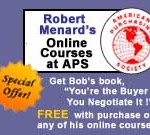Einstein’s Contribution to Win-Win Negotiation
Win-Win negotiation has its evangelical adherents and doubting Thomas’. If we could transfer the matter from the ill defined fog of interpretation to the precisely defined strictures of science, perhaps the doubters might have a new and more tangible perspective.
An Open Mind
We will use the concept of an open mind for starters. Were a seated crowd asked to stand if they refuse to have an open mind, every one would remain with butts in place. However, suppose that this equivalent question is posed to the same seated crowd, “Who here is nothing but a closed minded bigot?” The result would be the same.
Most of us like to think of ourselves as open minded. We are we are not sure what it means, but it sounds good. Diplomats joke that tact is the ability to tell someone he is open-minded when they really think the fellow has holes in his head. For negotiators, open mindedness is an essential quality for Win-Win. It means recognizing that many outcomes, including both sides winning, are possible, depending upon your point of view.
Let’s challenge our open mindedness with a quiz. Is it possible for a real physical tangible object to be moving backward and forward at the same point in space and time?
In negotiation training seminars, participants will cite walking backward in a forward moving train, but the resultant vector is about 100 km/h moving forward. Others will use a rubber band analogy, but individual particles are either moving forward or backward.
For assistance in answering this weighty question, we invoke the expertise of no less an authority on such things than Albert Einstein, the 20th century physics and philosophy genius. The story of Einstein’s inspiration for his theory of special relativity is as follows. Einstein was standing on the quay of the train station waiting for his laboratory assistant traveling on the approaching train. Nearing the station, it became clear that the express train, which his assistant had mistakenly boarded, would not stop at the local station.
Albert Einstien’s point of view
At the exact point in space and time that the express train traveled at 100 km/h past Einstein’s point of view, the assistant’s suit case lashed to the top of the train became dislodged. Einstein witnessed the suitcase hurtling forward, in the direction of its imparted motion and momentum. At that very same point in space and time, the lab assistant traveling on the train looked up and saw his suitcase hurtling backward, away from the direction of his motion, decelerating from its previously imparted velocity of 100 km/h.
Clearly, both Einstein and his lab assistant were correct in their observations. The suitcase was moving forward and backward at the same point in space and time – it all depended upon the observer’s point of view.
The business equivalent
In the business world, the exact parallel to Einstein’s Special Relativity is negotiation. Buyers and sellers have their own points of view – indeed, they do not want the same thing. Simply but incontrovertibly stated, the buyer wants the stuff and the seller wants the money! This fact makes Win-Win attainable in most all commercial negotiations.
If buyers and sellers bring an open mind to negotiation, they will conclude that they can each achieve a Win. We can move forward and achieve our agenda without moving the other guy backward. This fact makes negotiation one of the most rewarding pursuits in business.

